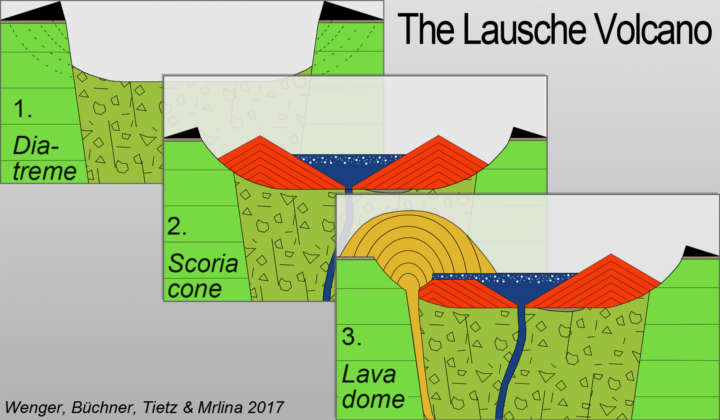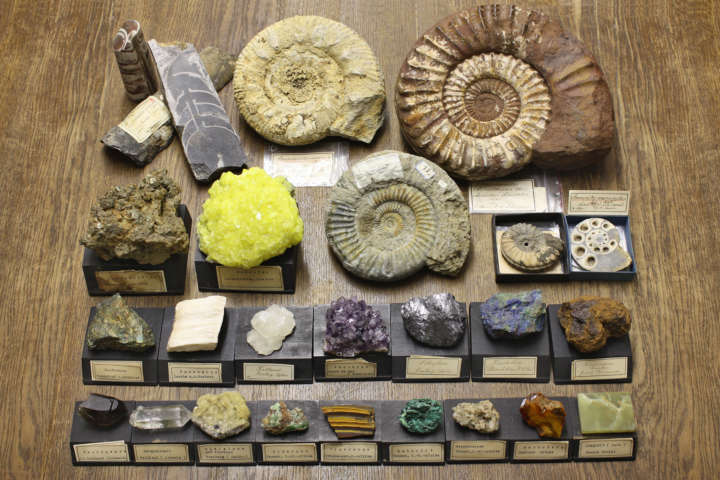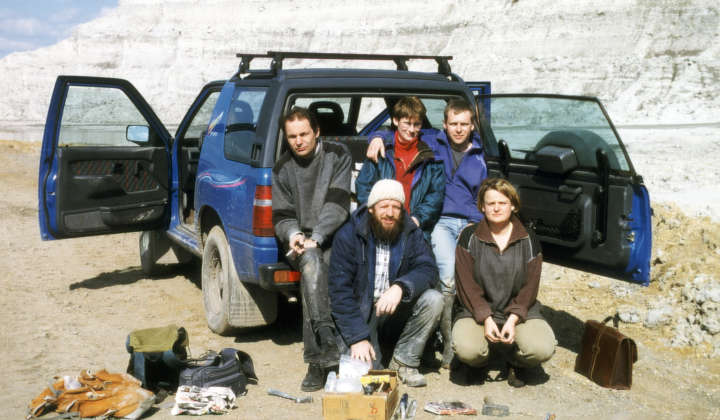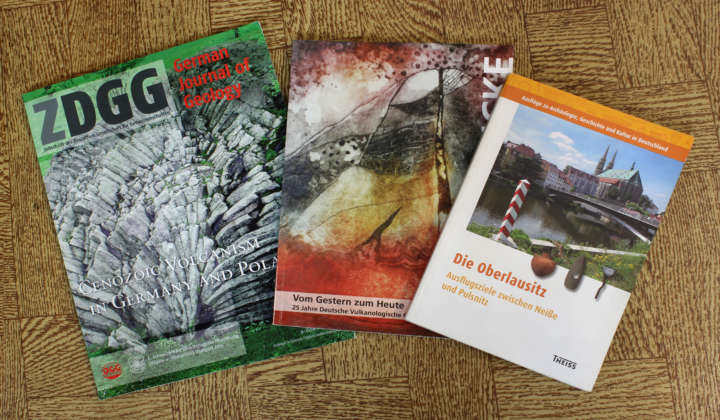News
Since 2017 we have been building a geological network in the border triangle with colleagues from the Technical University of Liberec and the Ralsko Geopark. You can find more information here.
Since 2020, we have been working with colleagues from the Czech Republic to develop concepts for teacher training at out-of-school places of learning. You can find more information here.
We have also been researching Cenozoic volcanism in the Jizera Mountains with Czech colleagues since 2020. More information you find here.History
In the almost two hundred years of history of the Museum of Natural History Görlitz succeeded for the first time in 1994 to establish a position for a geological conservator, which could be filled in September 1994 with Dr. Olaf Tietz. This job creation was at the same time the initial impulse for the development of an active geoscientific research area, which was transformed into the Geology/Palaeontology division when the Senckenberg Society for Natural Research took over the Görlitz State Museum of Natural History in 2009. While the tasks in the 1990s consisted of one third each of collection work, research and public relations, the focus of the work later shifted in favour of research with the resulting collection work.
One of the main focuses of the first few years was the collection holdings available in the museum, their repositioning, cleaning, conservation, reviewing and processing. This involved a separation into a historical collection (1850-1945) and a modern collection (from 1950). The latter was housed in a rolling cabinet system installed in 1996. In addition to the revision of the already existing parts of the collection, the scientific research work led to systematic new collections and extensions of the collection and the corresponding scientific processing of the new acquisitions. For example, extensive palaeobotanical fossil recoveries from the Berzdorf open cast mine between 1995 and 2002, bed load collections from gravel pits in Upper Lusatia, and the recovery and conservation of Pleistocene mammalian bones.
Since 2003, the research and collection work has been aimed with increasing importance at the neovolcanites of Upper Lusatia and the neighbouring areas in the Czech Republic, Poland and Germany. The new collections of this research area consist of basalts, phonolites and their pyroclastic formations as well as heavy mineral collections of alkaline basalts, such as zircones in gemstone formation from the research area.
Participation in the public relations work of the museum is a particular concern of the staff of the Geosciences Section. Through regular public geological excursions in May and September and popular science lectures, geoscientific topics and their own research results are to be popularized. The museum also tries to communicate its geoscientific contents in a comprehensible way by designing exhibitions. One example is the permanent exhibition „Geologie der Oberlausitz“ (Geology of Upper Lusatia), which has been presented in the main building of the museum since 2003. Within the framework of various cooperations with university institutions, geological excursions for students of geosciences are guided through Upper Lusatia and lectures or seminars are regularly held at the Zittau-Görlitz University of Applied Sciences.







